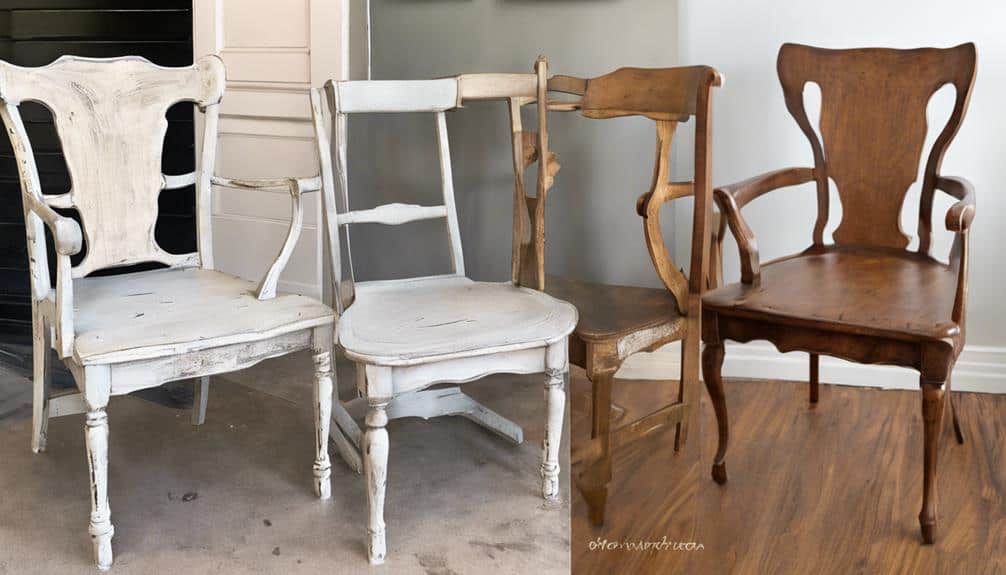You can remove chalk paint using one of five methods, each suited to specific surfaces. For a gentle approach, try scraping and sanding, working in small sections to avoid damage. Alternatively, use a chemical paint stripper, applying it according to instructions and then lightly sanding the surface. A solvent and sanding technique combines the two, while a heat gun can be used on metal and wood surfaces. For a non-toxic approach, mix water and vinegar, applying the solution and then gently scrubbing the surface. Explore each method to find the best fit for your project and discover the tips and tricks to achieve a smooth finish.
Key Takeaways
• Use the Scraping and Sanding Method with a putty knife and progressively finer grits of sandpaper for a smooth finish.
• Apply Chemical Paint Stripper, let it sit, scrub, and lightly sand for a stripped surface.
• Combine Solvent and Sanding Technique by applying a stripper, scraping, and lightly sanding for a smooth finish.
• Utilize the Heat Gun Removal Method on metal and wood surfaces by melting the paint and scraping it off carefully.
• Apply a Water and Vinegar Solution, let it penetrate, scrub gently, and rinse for a residue-free surface.
Scraping and Sanding Method
Using a putty knife, you'll carefully scrape away the chalk paint, working in small sections to avoid gouging the underlying surface. As you scrape, maintain a gentle touch to prevent damaging the wood or other surfaces. This method requires patience, as it can be time-consuming, but the results are thorough and precise.
Once you've removed the bulk of the paint, switch to sanding to smooth out the surface. Using progressively finer grits of sandpaper, you'll be able to remove any remaining paint residue and achieve a smooth finish. This is especially important when working with furniture, where a smooth surface is essential.
Chemical Paint Stripper Method
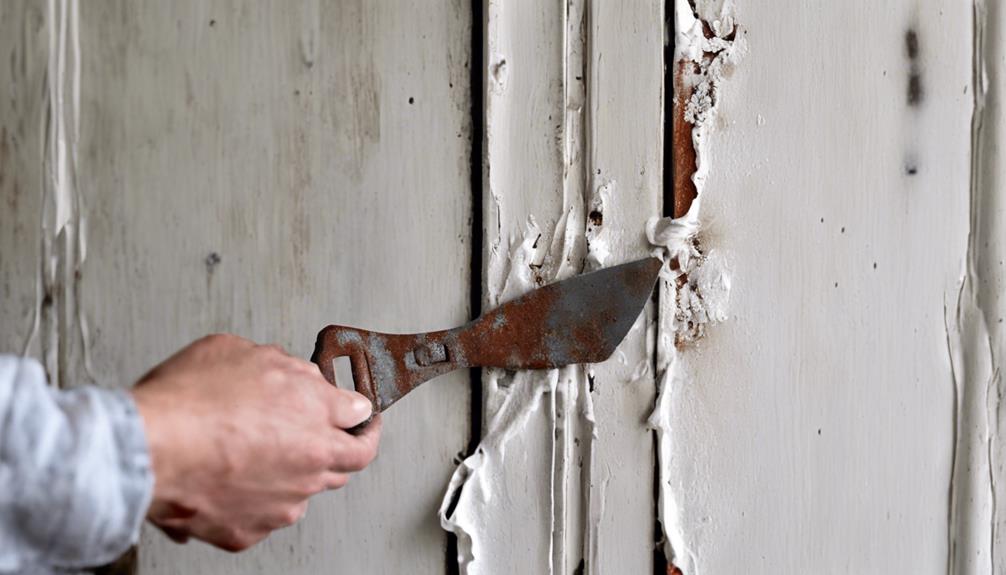
You can opt for the chemical paint stripper method, a faster alternative to scraping and sanding, especially when dealing with broad, flat surfaces where speed and efficiency are paramount. This method is ideal for removing chalk paint from wood surfaces, but it's not recommended for furniture with upholstery due to the strong chemicals involved.
To use this method, follow these steps:
- Apply the paint stripper: Use a brush or roller to apply the chemical paint stripper to the surface, making sure to follow the manufacturer's instructions.
- Let it sit: Allow the stripper to sit on the surface for the recommended amount of time, usually 15-30 minutes.
- Scrub the surface: Use a scrub brush to remove the softened paint, working in small sections.
- Finish with sanding: Once the paint is removed, use a light sanding to smooth out the surface.
Remember to take proper precautions when using chemical paint strippers, including wearing gloves, eye protection, and laying down protective cloth. This method is effective for flat surfaces, but for intricate carvings or detailed areas, a solvent and sanding method may be more suitable.
Solvent and Sanding Technique
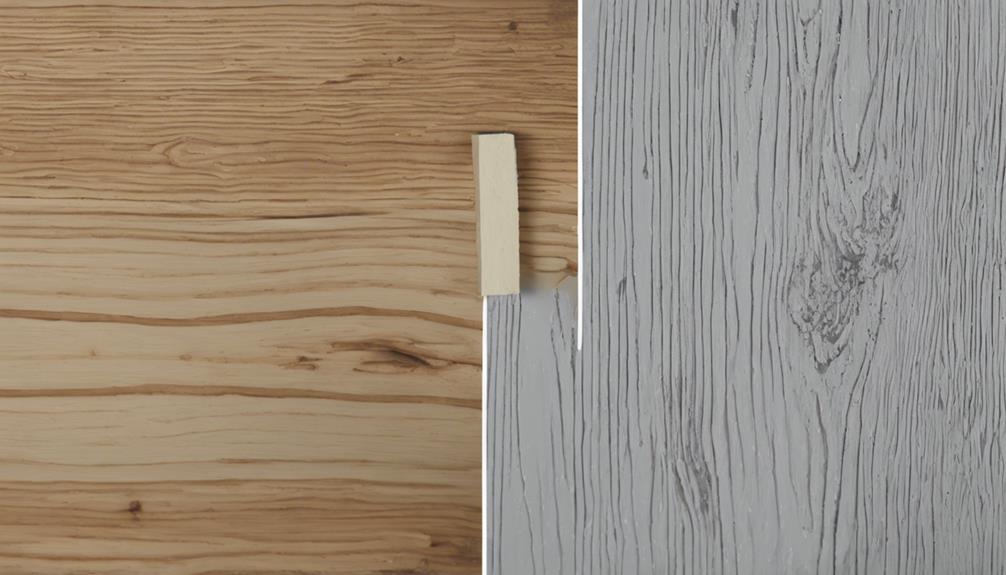
What makes the solvent and sanding technique a preferred choice for removing chalk paint is its ability to effectively tackle broad, flat surfaces with impressive speed and efficiency. This method is ideal for large, flat areas, but not recommended for intricate carvings or upholstered furniture.
Here's a breakdown of the solvent and sanding technique:
| Step | Description | Tools Needed |
|---|---|---|
| 1 | Apply chemical paint stripper | Paint stripper, gloves, eye protection |
| 2 | Wait for the stripper to soften the chalk paint | – |
| 3 | Scrape off the softened paint | Steel wool, scraper |
| 4 | Lightly sand the surface | Sandpaper (120-grit) |
| 5 | Inspect and repeat if necessary | – |
After removing the old chalk paint, you'll be left with a smooth wood grain surface, ready for your next project. Remember to take necessary precautions when using chemical paint strippers, and always follow the manufacturer's instructions. This method is perfect for removing old chalk paint from a piece of furniture, and it's one of the fastest ways to achieve efficient results on suitable surfaces.
Heat Gun Removal Method
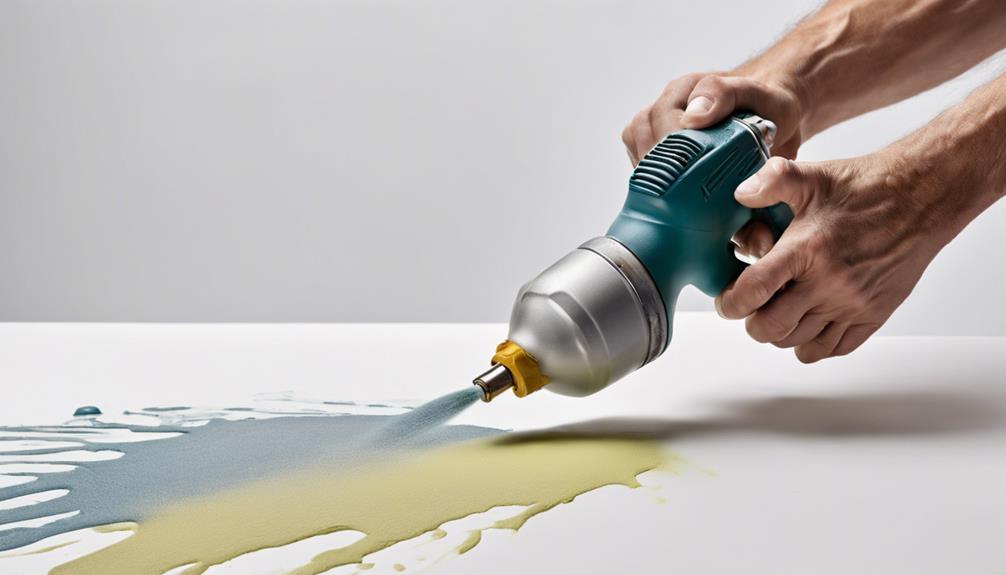
A heat gun, set to a low temperature, can effectively loosen chalk paint, allowing it to be scraped off with a putty knife or scraper. This method is ideal for removing chalk paint from metal and wood surfaces. When using a heat gun, it's important to follow safety precautions to avoid damaging the surface underneath.
Here are some key considerations when using a heat gun to remove chalk paint:
- Low heat setting: Avoid using high heat, as it can damage the surface or cause the paint to burn.
- Safety first: Wear protective eyewear and gloves to prevent injury from heat or flying debris.
- Scrape carefully: Use a putty knife or scraper to remove the melted chalk paint, taking care not to scratch the surface.
- Test a small area first: Verify that the heat gun doesn't damage the surface or the paint before proceeding.
Water and Vinegar Solution
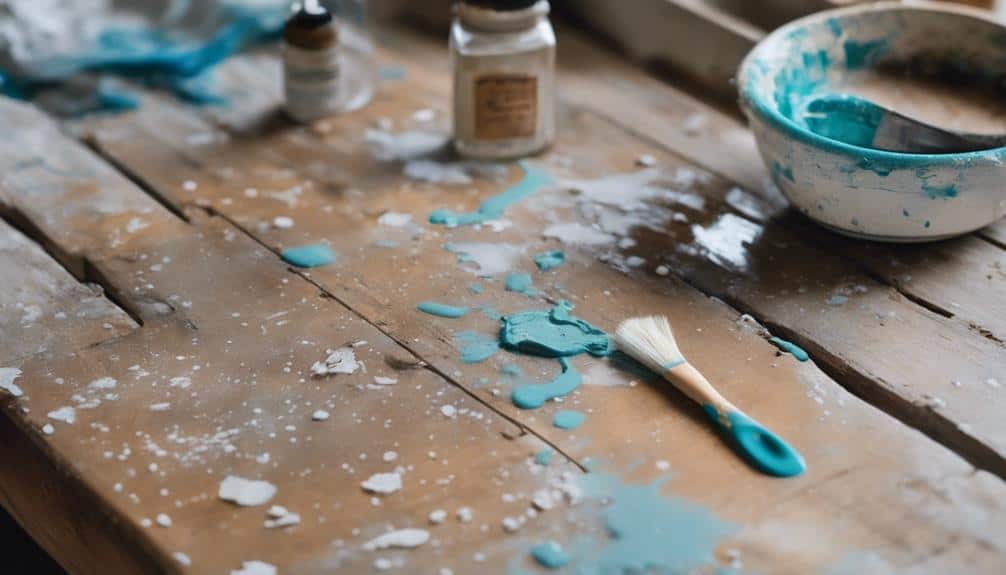
Mixing equal parts water and vinegar creates a natural and non-toxic solution that effectively lifts chalk paint from surfaces without damaging them.
This solution is a gentle and versatile option for removing chalk paint from various surfaces, including wood, metal, and glass.
To use this method, simply mix equal parts water and vinegar in a bowl, then apply the solution to the chalk paint. Let it sit for a few minutes to allow the solution to penetrate the paint, then scrub the area gently with a soft cloth or brush.
Rinse the surface with clean water to remove any residue. This method is particularly effective on delicate surfaces that can't withstand harsh chemicals or abrasive scrubbers.
Frequently Asked Questions
What Is the Easiest Way to Remove Chalk Paint?
As you stand before the chalk-painted surface, envision the vibrant hues melting away like morning dew on a summer morning.
You're wondering, 'What's the easiest way to remove chalk paint?' For a hassle-free experience, reach for sandpaper – a gentle, yet effective, approach.
With light, sweeping strokes, the paint will flake off, revealing the surface beneath. This tried-and-true method is a great starting point for a smooth, paint-free finish.
What Dissolves Chalk Paint?
You're wondering what dissolves chalk paint? Well, you're in luck! Denatured alcohol, acetone, and mineral spirits are your go-to solvents.
These powerful liquids break down the paint's bond with the surface, making removal a breeze.
Just apply them using a cloth or brush, let them sit, and scrape off the dissolved paint.
Remember to follow manufacturer instructions and take safety precautions, like proper ventilation and gear, to guarantee a smooth process.
Will Citristrip Remove Chalk Paint?
You're wondering if Citristrip can tackle chalk paint removal. The answer is yes!
Citristrip's gentle, biodegradable formula makes it an ideal choice for removing chalk paint from various surfaces. Its gel formula adheres well to vertical surfaces, and its low VOC content guarantees a safer, more pleasant experience.
With Citristrip, you can effectively strip multiple layers of paint, including chalk paint, from wood, metal, and masonry surfaces.
What Takes Chalk Paint off Metal?
You're probably thinking, 'What's the magic eraser for chalk paint on metal?' Well, it's not that simple, but you're close!
To remove chalk paint from metal, you'll need to get a bit more aggressive. Degreasers, Citristrip, or other chemical strippers can do the trick.
If you're feeling bold, try sandblasting or heat guns to melt it off.
Experiment with different methods to find the one that works best for you.
